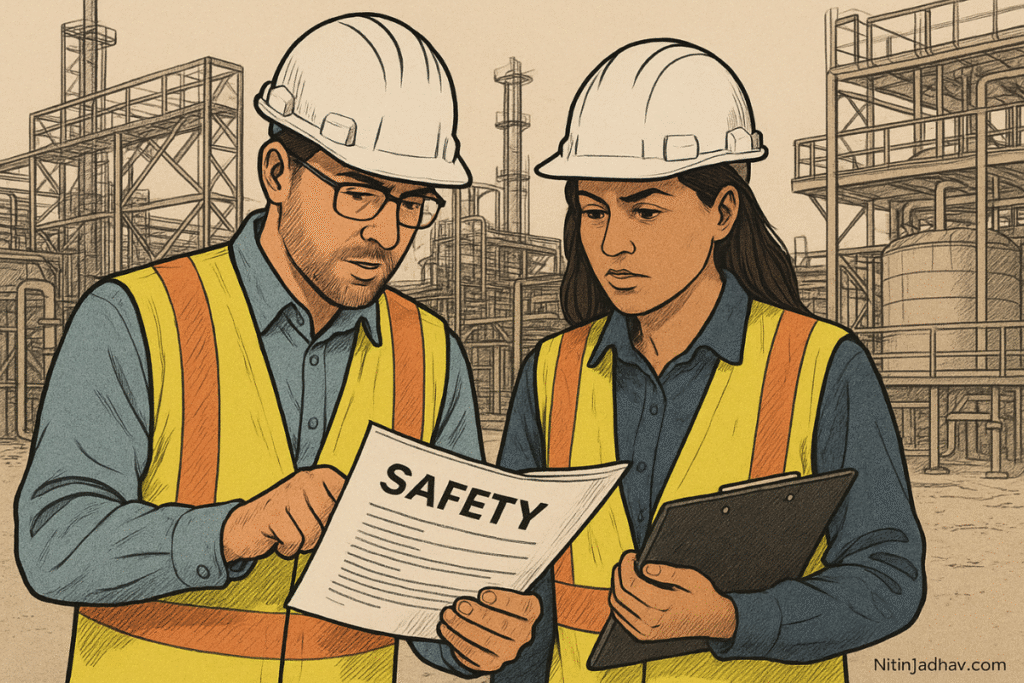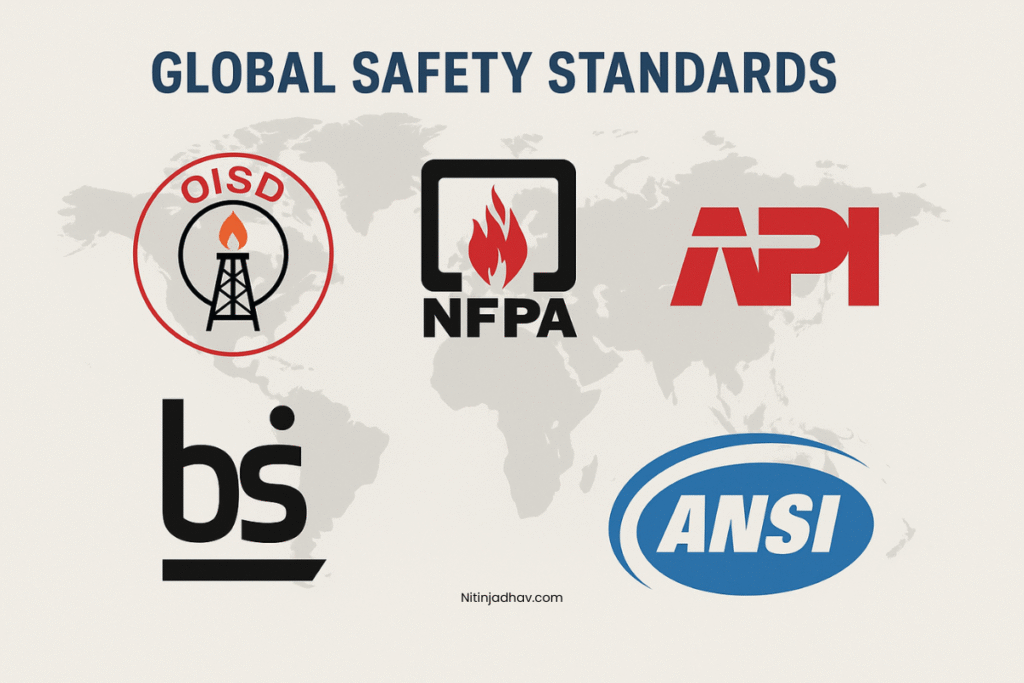Introduction
Process Safety Management (PSM) is a structured framework aimed at preventing the release of highly hazardous chemicals (HHCs) that can lead to catastrophic events such as explosions, fires, and toxic exposures. Defined by OSHA under standard 29 CFR 1910.119, PSM provides industries—especially in the oil & gas, petrochemical, chemical, and manufacturing sectors—with a systematic approach to managing the integrity of operating systems and processes.
This comprehensive article explores each element of PSM in detail, offering practical guidance, real-world applications, and integration strategies. It serves as a foundational resource for engineers, safety managers, and organizational leaders responsible for implementing and maintaining effective process safety programs.
1. Employee Participation
Employee involvement is crucial to the success of any PSM program. Workers have hands-on knowledge of operations and equipment and can contribute significantly to hazard identification and risk control.
Key Actions:
- Develop a written employee participation plan
- Involve employees in PHA (Process Hazard Analysis) teams
- Share relevant safety information and incident learnings
2. Process Safety Information (PSI)
PSI involves documenting critical information about the hazardous chemicals, equipment, and technology in use. Accurate PSI forms the foundation for all other PSM elements.
Key Components:
- Chemical properties and hazards (MSDS, toxicity, reactivity)
- Process technology (flow diagrams, operating limits)
- Equipment information (P&IDs, materials of construction, relief systems)
3. Process Hazard Analysis (PHA)
PHA is a detailed, structured risk assessment used to identify potential hazards and assess their impact. Techniques such as HAZOP, What-If, and FMEA are widely used.
Key Requirements:
- Update and revalidate PHAs every 5 years
- Include worst-case and alternative scenarios
- Document recommendations and track to closure
4. Operating Procedures
Clear and accurate operating procedures help ensure consistency, minimize errors, and maintain safety during normal and abnormal conditions.
Scope Includes:
- Startup, normal operations, temporary operations
- Emergency shutdowns and abnormal conditions
- Safety and health considerations
5. Training
Employees must be trained to understand the hazards associated with their tasks and how to perform them safely.
Training Must Include:
- Process operations and emergency procedures
- Refresher training at regular intervals
- Documentation of employee understanding and attendance
6. Contractors
Contract workers must meet the same safety standards as in-house personnel. This includes proper orientation, supervision, and performance evaluation.
Contractor Responsibilities:
- Understand process hazards and emergency actions
- Follow all site-specific procedures
- Participate in audits and safety programs
7. Pre-Startup Safety Review (PSSR)
PSSR is conducted before the introduction of hazardous chemicals or startup of new or modified processes.
Checklist Includes:
- Equipment and procedures in place
- PSI updated and reviewed
- Employees trained for new operations
8. Mechanical Integrity (MI)
Mechanical Integrity ensures the continued reliability and safety of critical equipment.
Elements of MI Program:
- Inspection, testing, and preventive maintenance (ITPM)
- Qualification of maintenance personnel
- Failure tracking and repair documentation
9. Hot Work Permit
Hot work operations, such as welding and cutting, require strict permit systems to prevent fires and explosions.
Permit System Includes:
- Hazard assessment
- Fire watch and extinguishing equipment
- Permit validity and controls
10. Management of Change (MOC)
MOC ensures that any changes to processes, equipment, or personnel are evaluated for safety impacts.
MOC Steps:
- Identify and document the change
- Conduct hazard review and update PSI
- Communicate changes to affected personnel
11. Incident Investigation
All incidents, near-misses, or process upsets must be investigated promptly to determine root causes and implement corrective actions.
Investigation Procedure:
- Initiate within 48 hours
- Include multidisciplinary team
- Document findings and lessons learned
12. Emergency Planning and Response
Preparedness for fires, toxic releases, and explosions is essential.
Emergency Plan Includes:
- Evacuation routes and alarms
- Coordination with local responders
- Regular drills and scenario testing
13. Compliance Audits
Periodic audits ensure the effectiveness of the PSM system and verify adherence to regulatory standards.
Audit Features:
- Conduct at least every 3 years
- Action plans for deficiencies
- Documentation and continuous improvement
14. Trade Secrets
While maintaining confidentiality, employers must ensure that all safety-relevant information is accessible to those involved in process safety.
Trade Secret Policy:
- Share necessary information with safety teams and auditors
- Protect proprietary information through confidentiality agreements
Integration with International Standards
- OSHA 29 CFR 1910.119 (U.S.)
- CCPS Guidelines (AIChE)
- IEC 61511 for SIS lifecycle
- OISD-GDN-206 for India’s oil & gas industry
Internal Linking Suggestions:
- Link to related articles: HAZOP Study, Safety Integrity Level (SIL), LOPA, Incident Investigation Methodologies
External Linking Suggestions:
- OSHA PSM Page: https://www.osha.gov/process-safety-management
- CCPS Center for Chemical Process Safety: https://www.aiche.org/ccps
Conclusion
An effective Process Safety Management system is a cornerstone of operational excellence and risk control in hazardous industries. By implementing and continuously improving each of the 14 PSM elements, organizations can enhance safety, ensure regulatory compliance, and prevent catastrophic incidents.
For additional guides on process safety methodologies, visit the Process Safety section of NitinJadhav.com.


